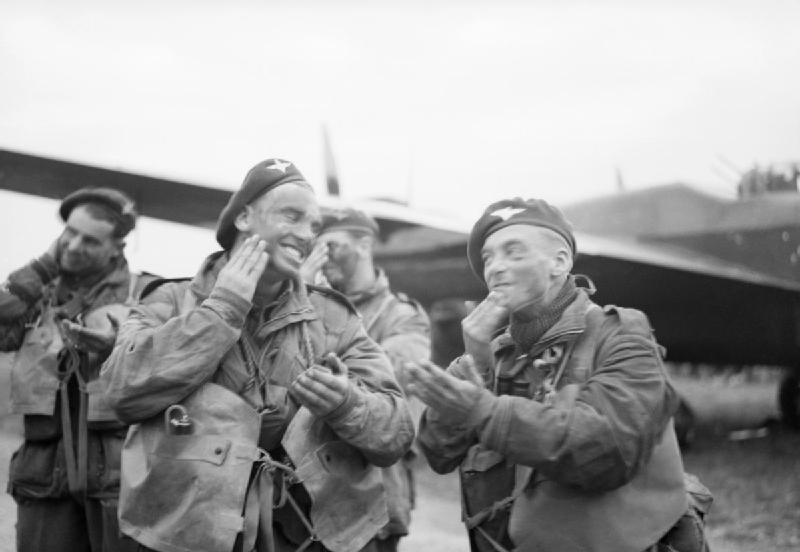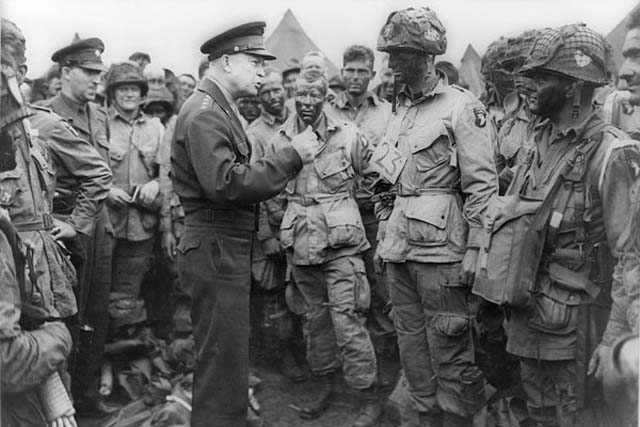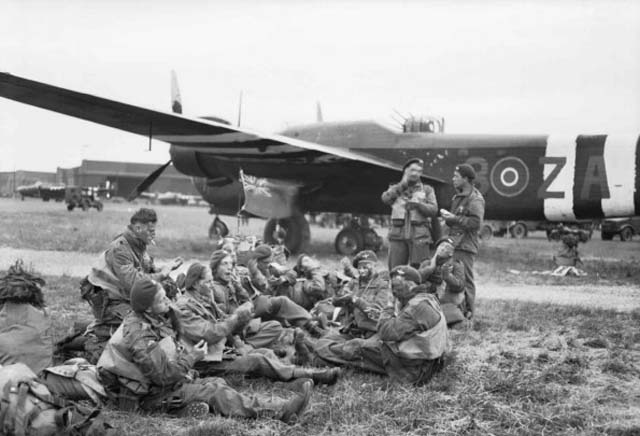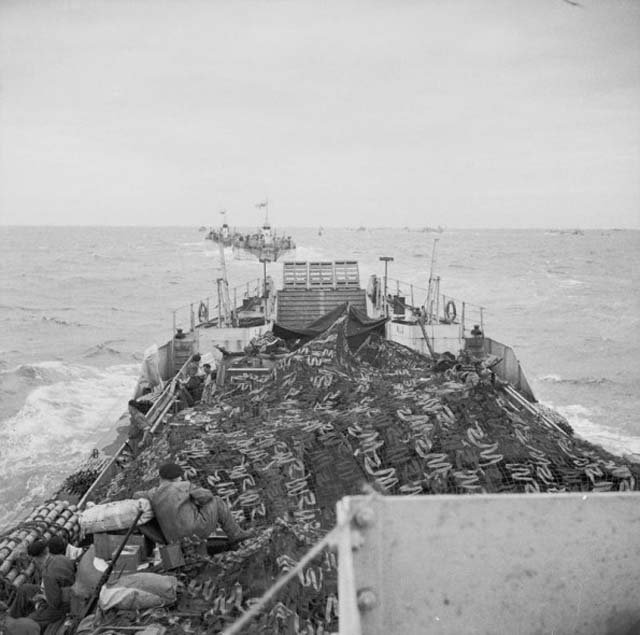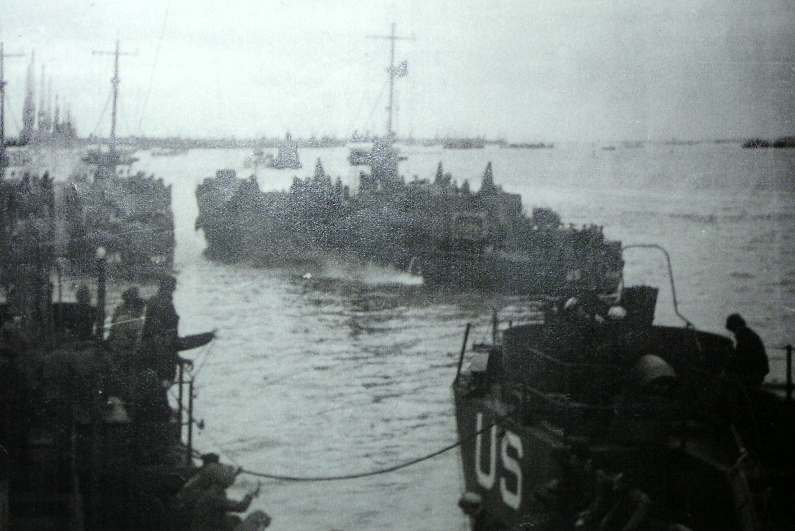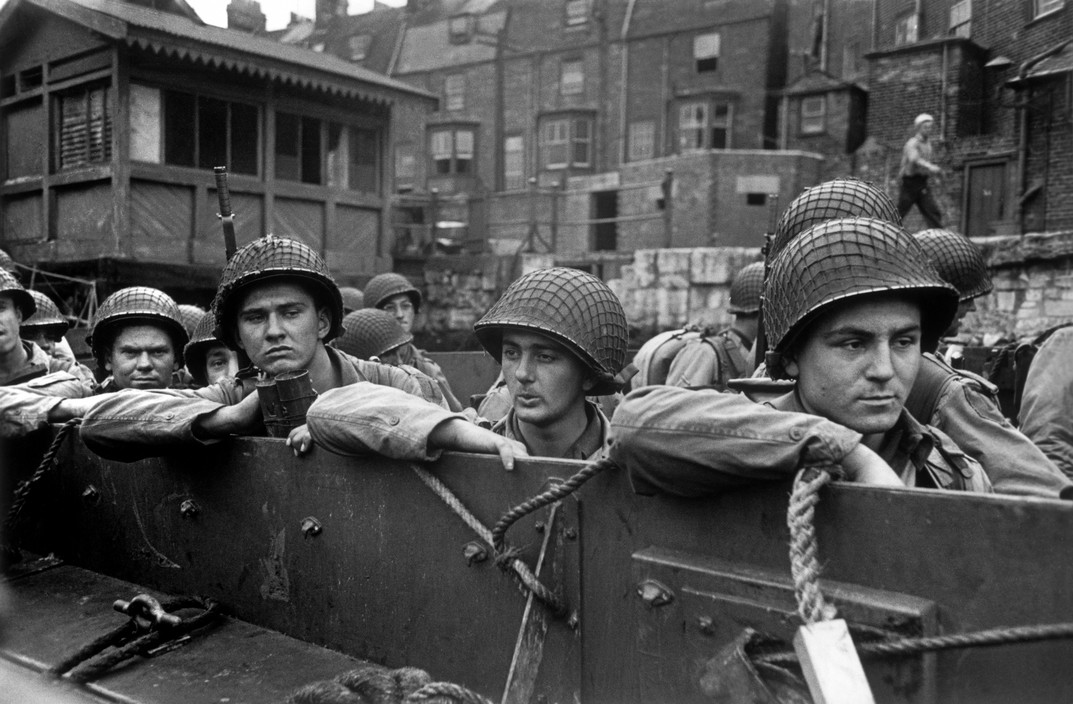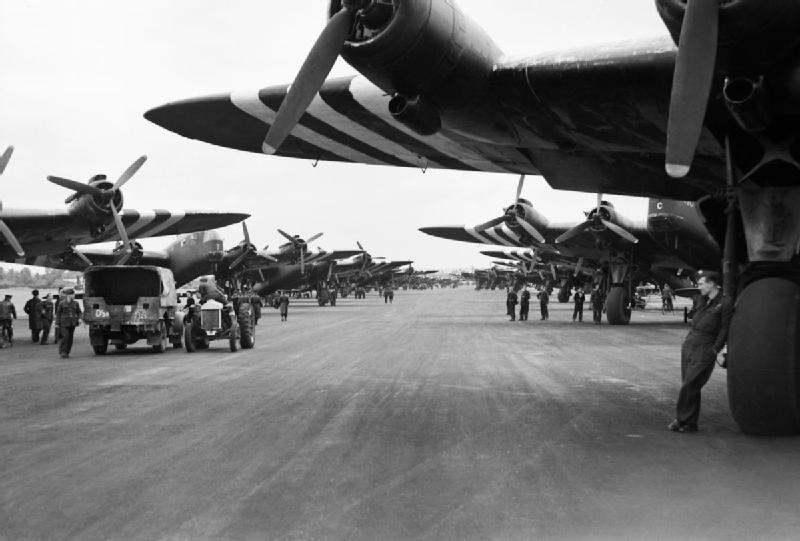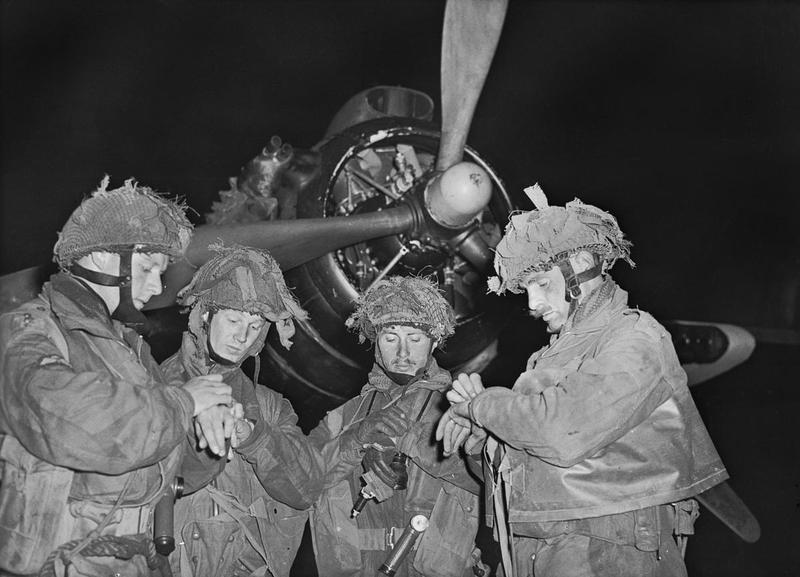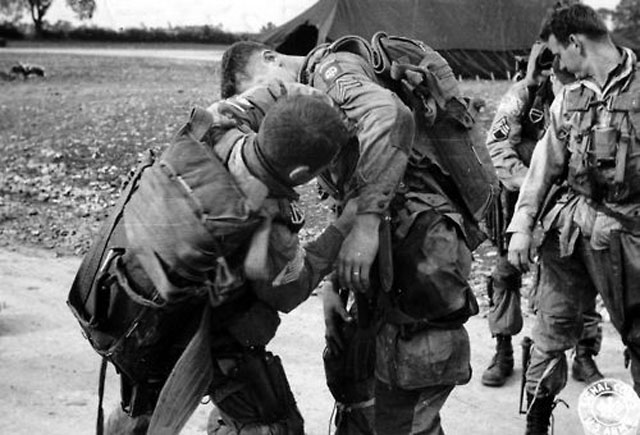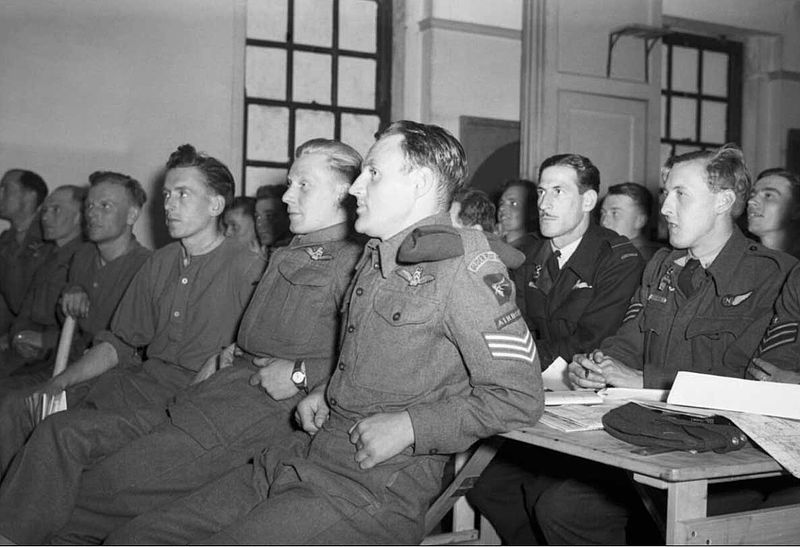Air Operations, Asia
B-29 Superfortresses of the US XX Bomber Group carry out their first bombing mission against Bangkok.
[Air Operations, Carolines
VII Bomber Command B-24s based at Eniwetok photograph and bomb Guam, then proceed to the Momote airfield on Los Negros.
[Air Operations, CBI
BURMA- 9 10th Air Force B-25s attack Bhamo.
- 4 B-25s attack a bridge at Ledan Chaung.
- 50 fighter-bombers attack the Myitkyina area.
- More than 20 fighter-bombers attack Loilaw, Mogaung, Namti, and Tagwin.
- 18 308th Heavy Bomb Group B-24s and 12 14th Air Force B-24s attack Lashio.
- 7 308th Heavy Bomb Group B-24s attack barracks and warehouses at Namhkam.
- 29 14th Air Force P-40s attack oil barges near Yuankiang.
- 12 P-40s support Chinese Army ground troops on the Salween River front.
- 8 P-40s attack tanks at Taying.
- 10th Air Force B-25s airlift ammunition to Imphal.
- 77 of 98 58th Very Heavy Bomb Wing B-29s dispatched from bases in the Karachi area mount the first B-29 attack of the war against rail targets at Bangkok between 1052 and 1232 hours. Due to heavy undercast, 48 B-29s employ radar guidance to drop their bombs. 5 B-29s are lost in operational accidents in which 15 crewmen are killed or missing.
Air Operations, Europe
- In preparation for D-Day, Allied Air Forces have flown 200,000 sorties delivering 200,000 tons of bombs in only 2 months. 200 planes have been lost. The French railway system is virtually immobilized. All the bridges over the Seine River between Paris and the Channel have been destroyed. The final strike is a saturation bombing of 10 coastal batteries by 1,136 RAF heavy bombers during the night dropping 5,267 tons of bombs.
- In Operation TAXABLE 5 RAF Bomber Command squadrons and 18 naval vessels carry out diversionary operations in the Pas de Calais area.
Evening Ops:
- 1,012 aircraft are sent to bomb coastal batteries at Fontenay, Houlgate, La Pernelle, Longues, Maisy, Merville, Mont Fleury, Pointe du Hoc, Ouisterham and St Martin de Varreville. Included in this total are 551 Lancasters, 412 Halifaxes and 49 Mosquitos.
- 946 aircraft carry out their bombing tasks. Only two of the targets, La Pernelle and Ouisterham, are free of clouds and all the other bombing is entirely based upon Oboe marking. At least 5,000 tons of bombs are dropped, the greatest tonnage on one night thus far in the war.
- 2 Halifaxes of No. 4 Group on the Mont Fleury raid and 1 Lancaster of No. 6 Group on the Longues raid are lost.
- 110 aircraft of Nos. 1 and 100 Groups carry out extensive bomber-support operations: 24 'Airborne Cigar' (ABC)-equipped Lancasters of No. 101 Squadron patrol all likely night-fighter approaches, so that their German-speaking operators can jam the German controllers' instructions; No. 100 Group flies 34 RCM sorties and 27 Serrate and 25 Intruder Mosquito patrols.
- 2 Intruders and 1 ABC Lancaster are lost.
- 58 aircraft of Nos. 3 and 5 Groups carry out a variety of operations to conceal the true location of the invasion for as long as possible. 16 Lancasters of No. 617 Squadron and 6 G-H fitted Stirlings of No. 218 Squadron drop a dense screen of Window, which advances slowly across the Channel, to simulate a large convoy of ships approaching the French coast between Boulogne and Le Havre, north of the real invasion coast. These flights require exact navigation; both squadrons had been practising for this operation for more than a month. The second diversion is carried out by 36 Halifaxes and Stirlings of Nos. 90, 138, 149 and 161 Squadrons. These aircraft drop dummy parachutists and explosive devices to simulate airborne landings over areas not being invaded.
- 2 Stirlings of No. 149 Squadron were lost while carrying these operations.
- 31 Mosquitos bomb Osnabrück without a loss.
FRANCE:
- 423 8th Air Force B-17s and 203 B-24s attack coastal defenses aroung Boulogne, Caen, Cherbourg, and Le Havre.
- 4 B-17s, 2 B-24s, 1 P-47, and 1 P-51 are lost to ground fire
FRANCE:
- More than 100 IX Bomber Command B-26s and 100 P-47 dive-bombers attack coastal-defense batteries.
- F-5 aircraft from the 9th Air Force's 10th Photo Recon Group are dispatched to Normandy to take final pre-invasion photographs of the airborne landing and drop zones.
ITALY:
- 12th Air Force B-25s and B-26s attempt to slow retreating German Army forces by attacking road and highway bridges north of Rome.
- XII TAC fighter-bombers continue their offensive against motor vehicles using the German Army's lines of retreat.
ITALY:
- 15th Air Force B-24s attack marshalling yards at five locations in northern Italy.
- 15th Air Force B-17s and B-24s attack six rail bridges in northern and north-central Italy.
- 53 15th Air Force P-38s strafe two airdromes.
- 40 15th Air Force P-38s dive-bomb and strafe two airdromes.
Air Operations, New Guinea
- At 0115 hours, 4 Japanese Navy torpedo bombers attack the US-Australian surface battle force east of Biak Island, but no hits are scored.
- V Bomber Command B-24s attack targets near the airfield at Sorido.
- B-24s based at the Nadzab airfield undertake fruitless missions against a Japanese Navy convoy rumored to be in the western New Guinea area.
- V Fighter Command P-39s and RAAF aircraft attack the Wewak area.
- Throughout the night, Japanese aircraft mount harrassment raids against the airfield at Wakde, where several USAAF and RAAF aircraft are destroyed on the ground and many others are damaged.
Arctic
HM submarine Satyr sights a surfaced U-boat just after 9:00am about 4,500 yards away. The British submarine turns to port and runs in fast to gain a favorable firing position. At the new position it is discovered U-987 has altered her course. The Satyr adjusts her course and fires 6 torpedoes. 2 torpedoes strike the U-boat in the bow and under the conning tower. The forward part of the target is thrown into the air as if its back had been broken resulting in both halves sinking.
| Class | Type VIIC |
| CO | Oberleutnant zur See Hilmar Schreyer |
| Location | Arctic, W of Lofoten Islands |
| Cause | Submarine attack |
| Casualties | 52 |
| Survivors | None |
Atlantic
Off Normandy, France, mines sink the US minesweeper Osprey (AM-56) and damage the tank landing ship LST-981.
[CBI
BURMAOn the Salween front, 20,000 men of the Chinese 71st Army have now crossed the Salweeen River. The drive on Lung-ling continues.
CHINAGen Stilwell arrives in Chungking from Burma to meet with Generalissimo Chiang Kai-shek and Gen Chennault on the situation in China. Although he is very doubtful that Chennault can stop the Japanese, Stilwell agrees to divert an additional 1,500 tons of supplies destined for the B-29s at Chengtu to the 14th Air Force.
INDIAIn the XXXIII Corps sector ofr the British 14th Army area, the battle of Kohima ends in an Allied victory; the British 2nd Division finishes off the Japanese resistance on the Aradura Spur, south of Kohima, but the road from here to Imphal has still to be reopened. From the south, from Imphal, the Indian 20th Division and the remaining divisions of the IV Corps are still moving north.
The headquarters of the 3rd Combat Cargo Group is activated in India, along with the C-47-equipped 9th, 10th, 11th, and 12th Combat Cargo Squadrons. This will allow the 4th Troop Carrier Squadron, 62nd Troop Carrier Group, and the 16th, 17th, 18th and 35th Troop Carrier Squadrons of the 64th Troop Carrier Group to return to Italy and Sicily. These units have been supporting the CBI theater since April.
[Italy
The Allied forces make their triumphal entry into Rome, who are given a rapturous welcome by the population, and then push on beyond in pursuit of the retreating Germans. There are problems of traffic congestion on the few good roads which prevent the Allied forces using their full strength. As usual the German retreat is accompanied by skillful rearguard actions and demolitions. The German 14th Army is now being commanded by Gen Joachim Lemelsen. Alexander orders the US 5th and British 8th armies to advance to the Rimini-Pisa Line.
King Victor Emmanuel III, in accordance with his undertaking, leaves his kingdom in the hands of his son, Umberto of Savoy, who is desigated 'Lt-Gen of the Realm'.[MORE]
[New Guinea
Gen Walter Krueger, commander of the US 6th Army, urges TF HURRICANE on Biak to capture the airfields quickly, since the Japanese are still able to use them for attacks against the American beachheads at Hollandia and Aitape. On Biak, the 186th Infantry resumes its westward attack without opposition and reaches the main ridge, northeast of Mokmer airfield, which the 3rd Battalion scales. In the Ibdi area, the 162nd Infantry succeeds in clearing a trail inland and making contact with the 186th Infantry but, despite support of naval vessels offshore, can make little progress in the Parai Defile.
In the Hollandia-Aitape area, initial elements of the 6th Division arrive at Toem and begin the relief of the 158th Infantry, TF TORNADO. TF PERSECUTION's Herrick Force is withdrawn from Yakamul to the beachhead by water. Bailey Force completes an arduous trek via the perimeter of Company G, 127th Infantry, 2 miles west of Yakamul, and is sent westward along to coast to the Driniumor, to which Company G and its supporting artillery also retire. During the action in the Yakamul area, the 1st Battalion, 126th Infantry, has suffered 18 killed, 75 wounded, and 8 missing and has killed 200-250 Japanese. The 1st Battalion of the 127th Infantry, which has been trying for several days to drive the enemy from a ridge north of Afua, makes a stonger effort and finds that the Japanese have abandoned the ridge.
[Operation OVERLORD
The German 15th Army's radio monitor intercepts the second half of Verlaine's verse, the second part ot the message to the Resistance, which according to Canaris is to be given not more than 48 hours before the invasion: 'Blessent mon ca'ur | D'une langeur | Monotone.' ('Wound my heart with a monotonous langor'). The 15th Army - but still only the 15th - is put on a state of maximum alert.
Just after 10:00p.m. the paratroopers and glider-borne infantry take off. A little after midnight the sky over Normandy, bright as day with the flares, is filled with the rumble of aircraft and of German anti-aircraft guns, as Allied night bombers open the assault. The main mission of the airborne troops is to seize vital ground behind the German forces on both flanks of the Normandy invasion front and block German reinforcements from reaching the beachhead.
A vast fleet approaches the French coast. 2,727 ships of every kind including merchant ships, cross-Channel steamers, hospital ships, small Transatlantic liners, tugs, and tankers, carry or tow more than 2,500 landing craft. They are escorted by over 700 warships including 23 cruisers, 5 battleships - the British Ramillies and Warspite and the American Texas (BB-35), Arkansas (BB-33) and Nevada (BB-36), back in action after being sunk in the shallow waters of Pearl Harbor - and 104 destroyers. To oppose this armada, the equal of which has never been seen on the seas, the Germans have a total of 3 destroyers, 36 motor torpedo-boats and 34 submarines. The US minesweeper Osprey (AM-56) sinks when it hits a mine.
There are 21 American convoys and 38 British and Canadian. Sailing from almost the entire south coast of England, they carry men and equipment for the first wave of the invasion on the Normandy coasts. The Americans are heading for the beaches code-named 'Utah', at the base of the Cotentin peninsula, and 'Omaha', between Vierville sur mer and Ste Honorine. The British and Canadians are heading for 'Gold' and 'Juno', between Arromanches and St Aubin, and 'Sword', between Lion and the mouth of the Orne.
[Pacific
- The US submarine Puffer (SS-268) attacks a Japanese convoy in the Sulu Sea and sinks the replenishment vessel Ashizuri (2166t) and the oiler Takasaki (2500t) and damages the tanker No.2 Hishi Maru, northeast of Borneo. .
- The US submarine Shark (SS-314) sinks the Japanese transport Tamahime Maru (3080t) and the army transport Takaoka Maru (7006t) west of the Marianas.
Images from June 5, 1944
|
|
|
|
|
|
|
|
|
|
|
|
